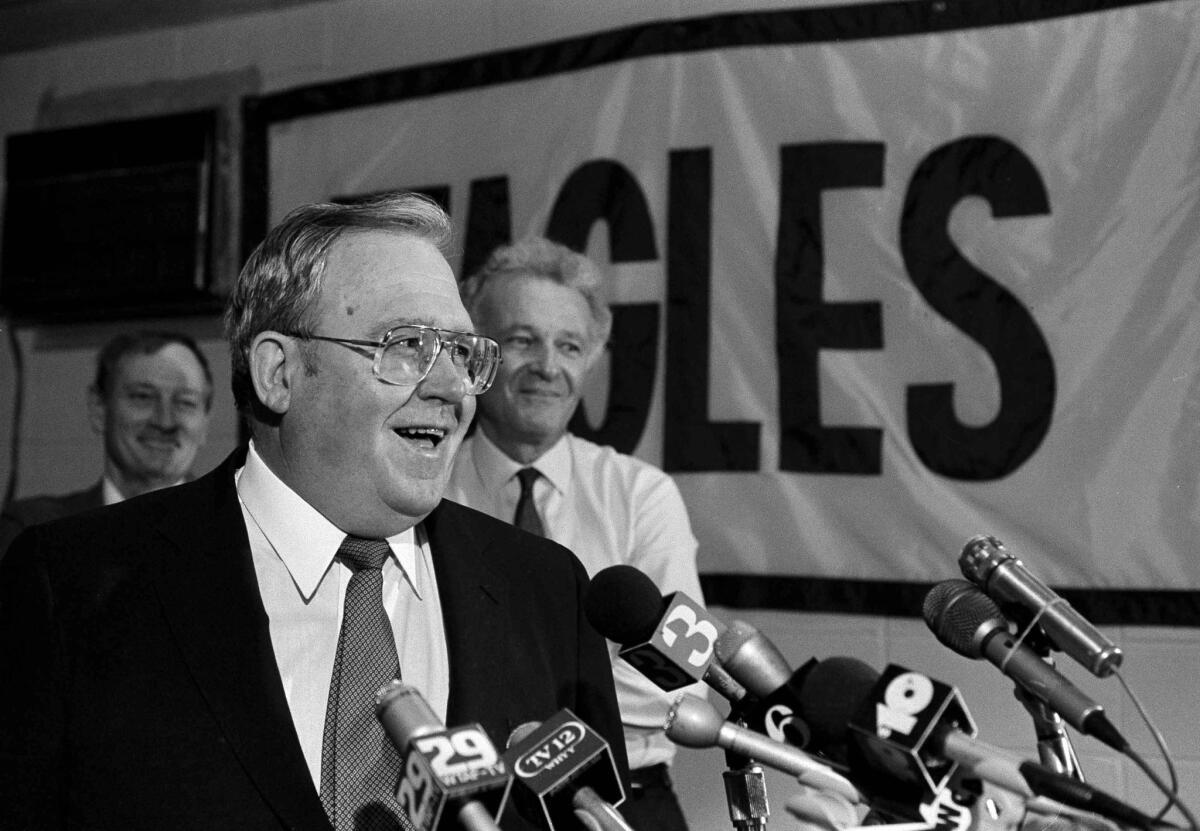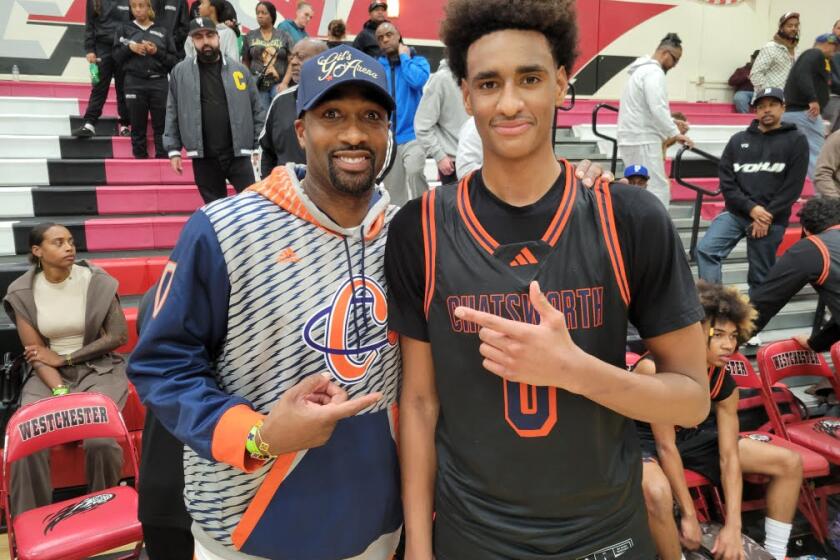Buddy Ryan played by his own set of rules

NFL coaching great Buddy Ryan, who passed away Tuesday at the age of 85, didn’t have difficulty finding the spotlight wherever he went. From the New York Jets when they became the first AFL team to win a Super Bowl in 1968, to the Super Bears of 1985 to his last stop as the head man of the Arizona Cardinals in 1994-95, Ryan had a common theme — “You got a winner in town.”
One of the best fits for that boisterous personality was his stop as head coach of the Philadelphia Eagles from 1986 to 1990. He was brash, but his teams backed up his words. He made fun of the rich owner, Norman Braman — “that guy in France” — who spent a lot of time overseas, and connected with the blue-collar town. His teams had grit.
Former NFL coach and defensive mastermind Buddy Ryan dies »
His teams also played “Buddy Ball,” which often meant testing the boundaries of NFL rules. The NFL had to alter rules because of Ryan’s repertoire of innovative moves. And he always made sure he told everyone how smart he was.
For example:
—His ultimate fake punt. The Eagles were just inside the 50 and had to punt. Ryan had punter John Teltschik take the snap and throw a pass way up in the air so it looked like a punt. Most of the opposition had turned and run back to block for a punt return and didn’t see the pass. Philadelphia’s Andre Waters waited inside the five, looking like a guy trying to down a punt but was actually trying to catch a pass. As Waters spread his hands to make the catch, the opposition figured what was going on and shoved Waters. Pass interference was called, the Eagles were awarded the ball at the spot of the foul, and then scored a touchdown on the next play. That deception is no longer permitted.
—If the Eagles were trying to hold on to a lead late in a game and had to punt, Ryan would put 12 players on the field so the opposition would not be able to block the kick. Sure it was illegal, but Ryan’s theory was you waste time on the clock and when you re-kick you’ve already seen their blocking tactic. In one game, the refs didn’t notice the Eagles had 12 men on the field, but in the post-game media conference Ryan made sure to tell everyone what he had done. The NFL later changed that rule, putting the time back on the clock for such an infraction.
—Back in the day, teams were allowed one injury in the last two minutes without losing a time out. Ryan took care of that rule. In the waning seconds of a game, he had Wes Hopkins fake a knee injury. The medical staff rolled onto the field with a stretcher and strapped Hopkins up. After the game, Ryan was asked about Hopkins’ injury status. He replied that Hopkins was not hurt, and didn’t everyone notice how quickly the stretcher got out there. Ryan had planned that to stop the clock. Now injuries in last two minutes cost a team a timeout.
—Ryan had a defensive rule that whenever they grabbed a turnover and were returning the ball, everyone’s assignment was to seek the quarterback and block him into oblivion. He used to say it made for some hilarious post-game film review when all the defenders would chase the quarterback like the Keystone Cops. Now there is a rule protecting quarterbacks from such an assault.
—Ryan was not a fan of famous Dallas Cowboys Coach Tom Landry, whom Ryan had accused of running up the score on opponents. The Eagles were running out the clock in a victory over the Cowboys. Quarterback Randall Cunningham had put his knee down on first couple of plays before faking a knee-down and throwing a bomb downfield. The scrambling Dallas defense committed pass interference on the play, the Eagles were awarded the ball inside the five and scored a touchdown. Afterward, Ryan had announced that maneuver was for all the teams Landry had piled on.
That was the kind of stuff that made him beloved in the City of Brotherly Love. It wasn’t enough just to execute these maneuvers, he had to tell everyone about it.
As Ryan said quite often: “If we don’t tell you about it, you might not hear the truth.”
Twitter: @athanla
More to Read
Go beyond the scoreboard
Get the latest on L.A.'s teams in the daily Sports Report newsletter.
You may occasionally receive promotional content from the Los Angeles Times.











